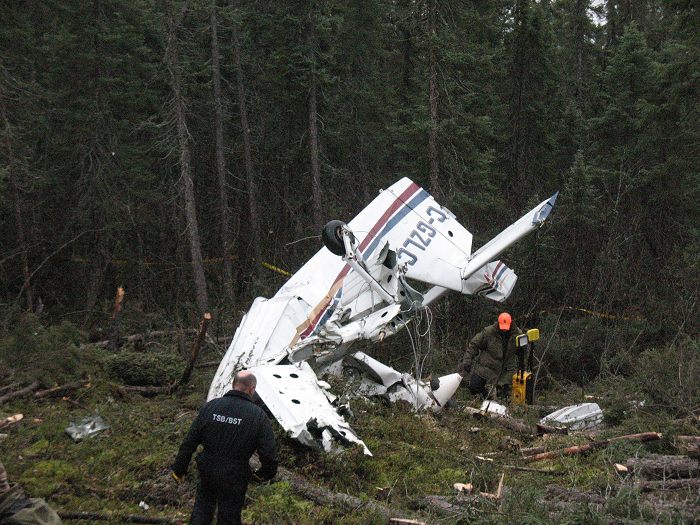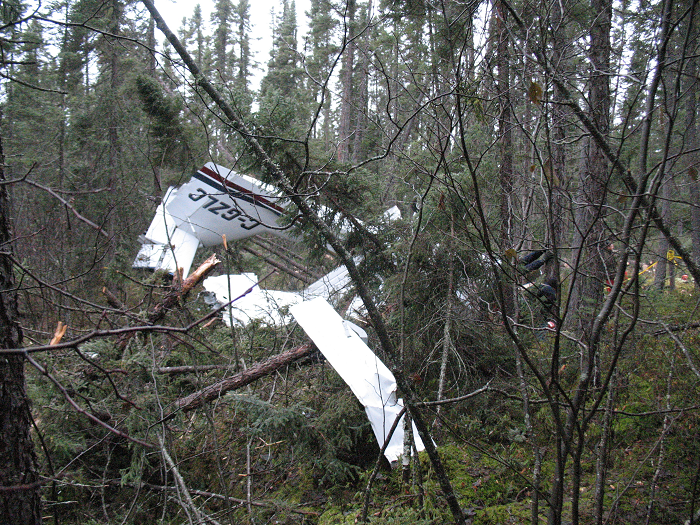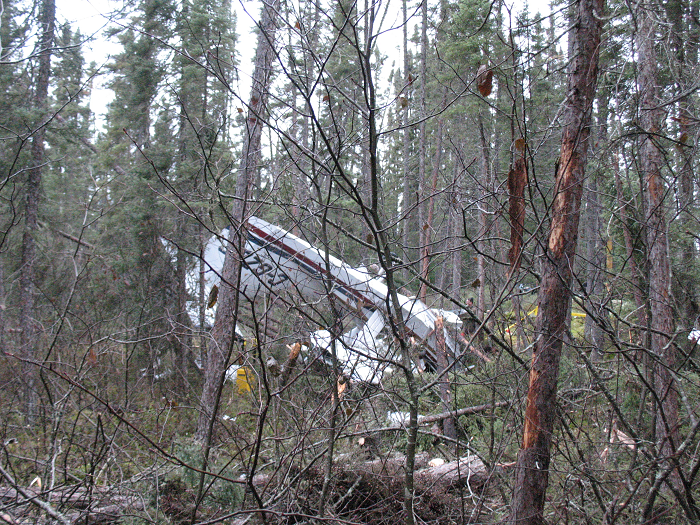Air transportation safety investigation A12C0141
The TSB has completed this investigation. The report was published on 27 February 2014.
Table of contents
Collision with terrain
Aerofab Inc. Lake 250, C-GZLC
Pickle Lake, Ontario
The occurrence
The privately registered Aerofab Inc. Lake 250 (registration C-GZLC, serial number 87) was being ferried from Lac la Biche, Alberta, to Trois Rivières, Quebec, with planned stops in The Pas, Manitoba, and Pickle Lake, Ontario. There were 2 pilots and 2 passengers on board. While conducting a visual approach to Runway 27 at Pickle Lake, the aircraft entered a steep descent and struck terrain approximately 1 nautical mile east of the runway threshold. The accident occurred during hours of darkness at approximately 1928 Eastern Standard Time. Both pilots and 1 passenger were fatally injured. The other passenger sustained minor injuries. The aircraft was destroyed by impact forces. There was no post crash fire. The aircraft's emergency locator transmitter activated on impact. The Joint Rescue Coordination Centre Trenton, Ontario, dispatched a C 130 Hercules, which dropped rescue personnel to the site. The surviving passenger was transported to Winnipeg, Manitoba, treated for minor injuries and released.
Media materials
News release
Loss of situational awareness contributed to 2012 aircraft crash near Pickle Lake, Ontario
Read the news release
Deployment notice
TSB deploys a team of investigators to an aircraft accident near Pickle Lake Airport in the province of Ontario
The Transportation Safety Board of Canada (TSB) is deploying a team of investigators to the site of an accident involving a Lake L250 aircraft that occurred near the Pickle Lake Airport, in the province of Ontario. The TSB will gather information and assess the occurrence.
Investigation information
Map showing the location of the occurrence
Investigator-in-charge

Ross Peden has 35 years of civil aviation experience. He joined the TSB in September 2001 as a Flight Operations investigator in the TSB central region office in Winnipeg Manitoba. Prior to joining the TSB, he worked as an airline pilot for different Canadian and foreign carriers, which included a 4 year stint in Sudan Africa and 3 years in Paris France. During that time, he flew different aircraft types, starting on small bush aircraft and eventually finishing commercial career on large jet aircraft. In 1996 he joined Transport Canada, as an Instrument procedures specialist, followed by a period with what was then called system safety.
Since joining the TSB, Mr. Peden has participated in several TSB investigations, including the 2005 Air France accident at Pearson Airport in Toronto.
Photos
Voir des images en haute résolution sur la page Flickr du BST.
Catégorie de l’enquête
Cette enquête est une enquête de catégorie 3. Dans le cadre de ces enquêtes, on analyse un petit nombre de problèmes de sécurité. Parfois, ces enquêtes donnent lieu à des recommandations. Les enquêtes de catégorie 3 se concluent généralement en 450 jours. Pour de plus amples renseignements, consultez la Politique de classification des événements.
Processus d'enquête du BST
Une enquête du BST se déroule en 3 étapes :
- L'étape du travail sur le terrain : une équipe d'enquêteurs examine le lieu de l'événement et l'épave, interviewe les témoins et recueille toute l'information pertinente.
- L'étape d'examen et d'analyse : le BST examine toute la documentation liée au dossier, effectue des tests en laboratoire sur des composantes de l'épave, établit la chronologie des événements et identifie toute lacune en matière de sécurité. Lorsque le BST soupçonne ou constate des lacunes en matière de sécurité, il en informe sans tarder les organismes concernés sans attendre la parution du rapport final.
- L'étape de production du rapport : une version confidentielle du rapport est approuvée par le Bureau et envoyée aux personnes et organismes qui sont directement touchés par le rapport. Ceux-ci ont l'occasion de contester ou de corriger l'information qu'ils jugent erronée. Le Bureau tient compte de toutes les observations fournies avant d'approuver la version définitive du rapport, qui est ensuite publiée.
Vous trouverez de plus amples détails à la page sur le Déroulement des enquêtes.
Le BST est un organisme indépendant qui mène des enquêtes sur des événements de transport aérien, ferroviaire, maritime et pipelinier. Son seul but est de promouvoir la sécurité des transports. Le Bureau n'est pas habilité à attribuer ni à déterminer les responsabilités civiles ou pénales.


